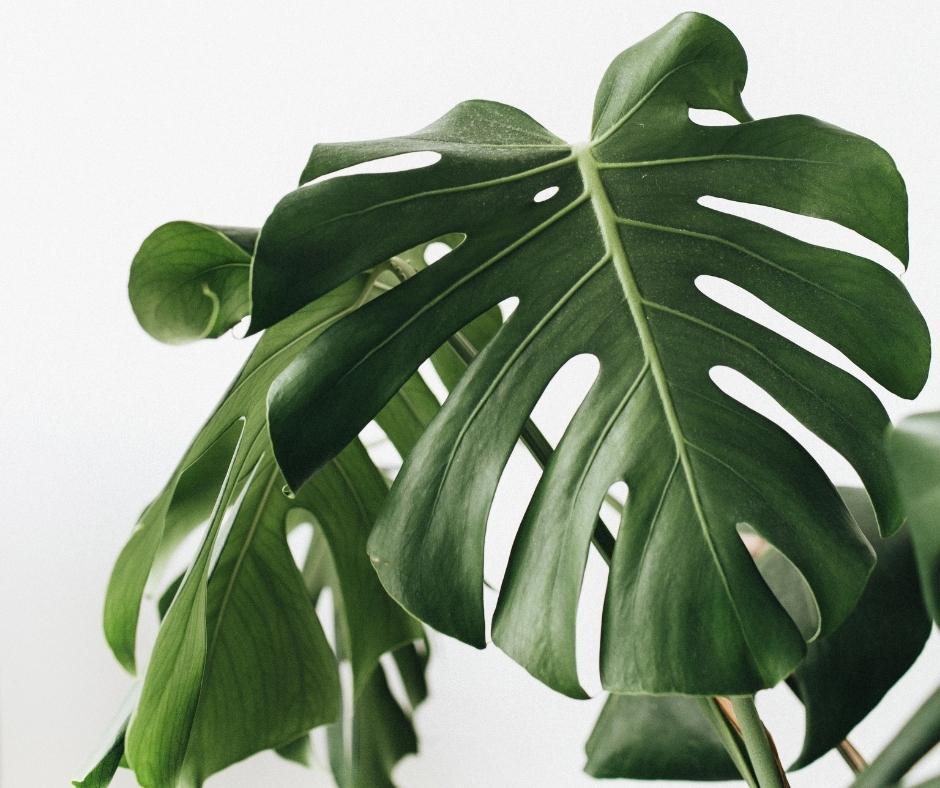
The Monstera deliciosa (Swiss Cheese Plant, sometimes called Swiss Cheese Plant) is a popular houseplant due to its enormous leaves. They’re simple to care for, although they do have one disadvantage: if they feel ignored, they’ll sulk and your Monstera leaves may droop. Don’t be alarmed; with some loving attention, they’ll soon be back on their feet.
The most typical reason for a drooping Monstera leaf is a lack of water. They like their soil to be ever so slightly wet. Excess water, poor light, fertilizer issues, pests, or transplant stress are other possibilities. It’s crucial to find out what’s wrong with your plant so that it may recover from illness.
Why Are My Monstera Leaves Drooping?
Take some time to examine your Monstera closely and check the care instructions if you notice that its leaves are wilting or that the entire plant is drooping. The good news is that this plant is highly robust, so if you give it the appropriate treatment, yours will soon recover its strength. Let’s look at each of these reasons in order.
Underwatering
In most cases, you’ll find sick-looking cultivars of these plants in office blocks and lobbies, where the leaves will usually be dusty and drooping listlessly. Despite their neglect, they somehow always seem to cling to life. With only minor care and attention, these veterans will bounce back with spectacular glossy foliage as a reward for his or her efforts.
For those who are unfamiliar with keeping houseplants, one of the most difficult challenges to overcome is watering. Some plants require a lot of water and others only need a little; and what constitutes adequate water for each species is unclear.
Knowing where your plant comes from can tell you a lot about what conditions it requires, and they come from the south of Mexico and Central America, where they flourish in wet tropical forests. It’s clear that dry soil isn’t an appropriate environment for them.
Correcting Dry Soil
Meters for testing soil moisture are available, but they vary in precision and aren’t really required. You’re better off just pushing your finger into the soil and detecting dampness rather than purchasing meters to measure soil moisture. The top two inches should be dry, however, the remainder of the earth should stay cool and wet.
If your plant is still in need of water after all these steps, it’s time for a thorough drench. You may water from the top or bottom, but make sure to wet all of the soil.
Fill a basin halfway with water and put your plant in it for 10-20 minutes to water from the bottom. Water will be absorbed through capillary action as the soil absorbs moisture.
When watering from the top, the dried potting mix may sometimes pass most of the water through without being absorbed by the soil. To counteract this, add a little water at a time and allow plenty of time for the soil to absorb it.
Once you’re satisfied that the soil is wet enough, leave the pot to drain any water from the drainage holes, clean off the plant’s leaves with a damp sponge to remove any dust, and replant it in its original location.
Lighting Problems
The majority of these plants are quite resilient, but keep in mind that they are forest plants and should be given enough light while also receiving little direct sunlight. If you notice brownish spots on your plant’s leaves, it’s time to move it to a more suitable location because it is receiving too much direct sun.
Low light will stress your plant, causing it to stretch and have fewer leaves. Dappled shade or bright light are both superb. The amount of sunshine that reaches your plant has a significant influence on its growth and health.

Overwatering
Overwatering your Monstera plant is also a potential problem. It will quickly reveal its displeasure by producing droopy yellow leaves, which typically start with the bottom ones and progress to the top. You may also detect an unnatural odor coming from the dirt, which can be a sign of root rot, which is quite devastating.
Continue performing the soil finger test on the damp soil and if it’s soggy, you’ve been overwatering. Check for plenty of drainage and holes in the bottom of the container, then allow the plant to dry out after ensuring there is adequate drainage.
It’s best to water the plant thoroughly and then not water it again until the top two inches of soil have dried out. If your plant pot is on a saucer, be careful that it isn’t continually inundated with water.
Another frequent cause of excessive dampness is that the plant has been improperly potted. It might be easy to assume that if you put your plant in a big container with more potting soil, it will have more room to grow.
What usually occurs is that the additional soil absorbs even more water, resulting in the pot becoming waterlogged. The soil surrounding the roots acts like a wet sponge in this situation. Always plant a Monstera plant into the next size container up when repotting it.
Temperature Stress
Because Monstera plants are tropical, however, they don’t like to be kept too chilly. The ideal temperature range is 64 and 84°F (29 and 29°C), which is quite forgiving.
Examine your Monstera plants for any sources of chilly drafts, which can cause excessive stress to the plant and result in drooping leaves. If you detect a temperature problem, you may use a digital thermometer to track the minimum and maximum temperatures over several days before shifting your Monstera.
Fertilizer Problems
These plants require a lot of nutrients, therefore they may grow to be quite large. They might reach a height of 60 feet in the wild, but when kept in pots, they don’t usually exceed 9 feet.
During the summer, give them two feeds a month; during the winter, once every two months. They’ll need more nutrients as this sort of development requires a constant supply of nutrients, so feed them once every two weeks with a general-purpose fertilizer throughout the year but not in the winter months. You can reduce it to one feed per month in the slower-growing cold season.
It’s a good idea to start by fertilizing your Monstera plant with a general-purpose organic fertilizer. However, go slowly at first so you don’t overwater or overfertilize it. Foliar applications of potassium nitrate are the most common type. It is important not to overdo it with the fertilizer since applying excessively often will cause build-up in the soil and root toxicity. If the roots stop functioning and your Monstera plant droops,
Look for signs of fertilizer salt buildup on the surface of the soil, and consider how often you’ve been fertilizing. If you feel you have been overly generous with your application, run water through the dirt for 5-10 minutes to wash away any excess fertilizer salts.
Alternatively, you may put your Monstera back into fresh soil and resume a less-than-daily feeding regimen.
Transplant Stress
Your Monstera deliciosa will grow in size rapidly as soon as they are satisfied with their growing conditions. The plant will eventually need to be repotted into a larger container. Use a pot that is approximately the same size as the one the plant has been in.
The benefits of using a raised planting bed rather than growing in the dirt include: It keeps your seedlings from becoming waterlogged, and it prevents them from overgrowing. However, while this solves the problem of waterlogging, it also ensures that growth does not get out of hand. You want a plant that is eye-catching but does not necessitate the use of a machete to enter through the front door.
Houseplants sometimes have a negative reaction to repotting, causing transplant stress. If the roots were bad and/or damaged during the repotting process, drooping Monstera leaves are more likely.
When repotting or pruning the roots of a Monstera, you don’t need to loosen the root ball unless they are rotten. For several weeks after repotting, be extra attentive to your Monstera in order for it to get used to its new environment.
Lack Of Support
The Monstera grows best in trees, so you’ll need to provide it with assistance in order for it to cling to and develop upwards. This will keep your Monstera upright and prevent it from sliding across the room looking for something to climb on. Moss poles are an excellent solution.
Another cause for your plant to start spreading is that it is looking for more light. Plants that don’t get enough of it can’t make the slits in their leaves, which are so unique to delicious monstera.
When the plant is deprived of light, the leaves do not develop slits and remain tiny and weak-looking. The condition will be remedied if you move the plant to a location with more natural light.
Pests and Bugs
More resistant plants exist, but they are susceptible to attack by the same sap-sucking pests that plague most indoor plant life; particularly mealy bugs and red spider mites. The first and most critical approach to defend against these plants is constant observation.
When a plant is afflicted with a pest infestation, it loses water and nutrients through the wounds on its leaves, which causes the Monstera leaves to droop and the entire plant to decline.
Check the tops and undersides of leaves on a daily basis, as it’s typically simpler to combat plant pests when they’re still young.
Final Thoughts
If you notice that your Monstera leaves are drooping, the first thing to check is whether it’s because of a lack of water. Examine the plant and its soil carefully to rule out this possibility, then go through each reason one by one and look for any indications of an issue in your plant and the environment.
